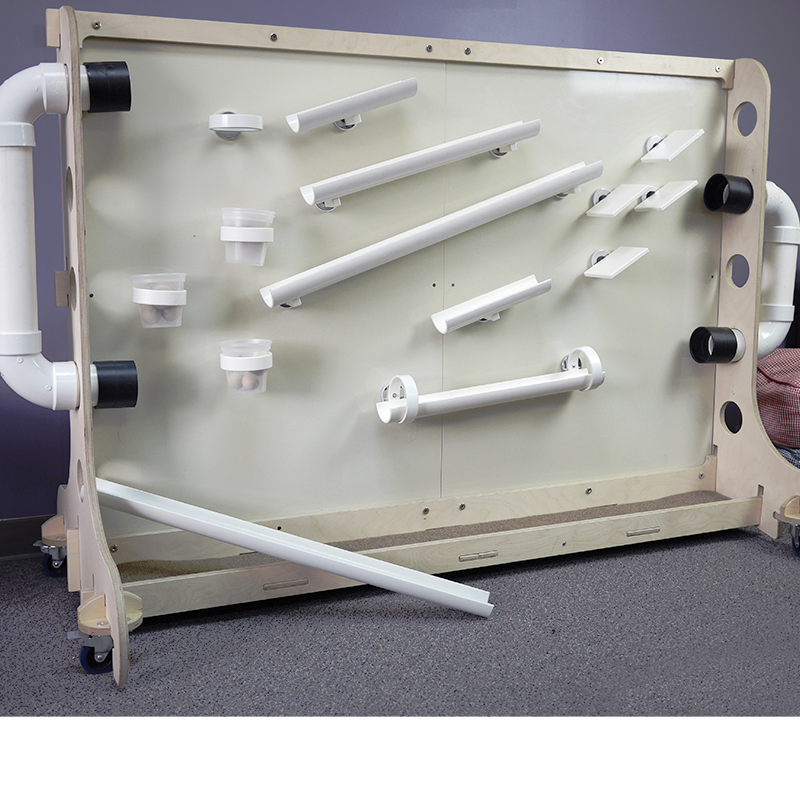
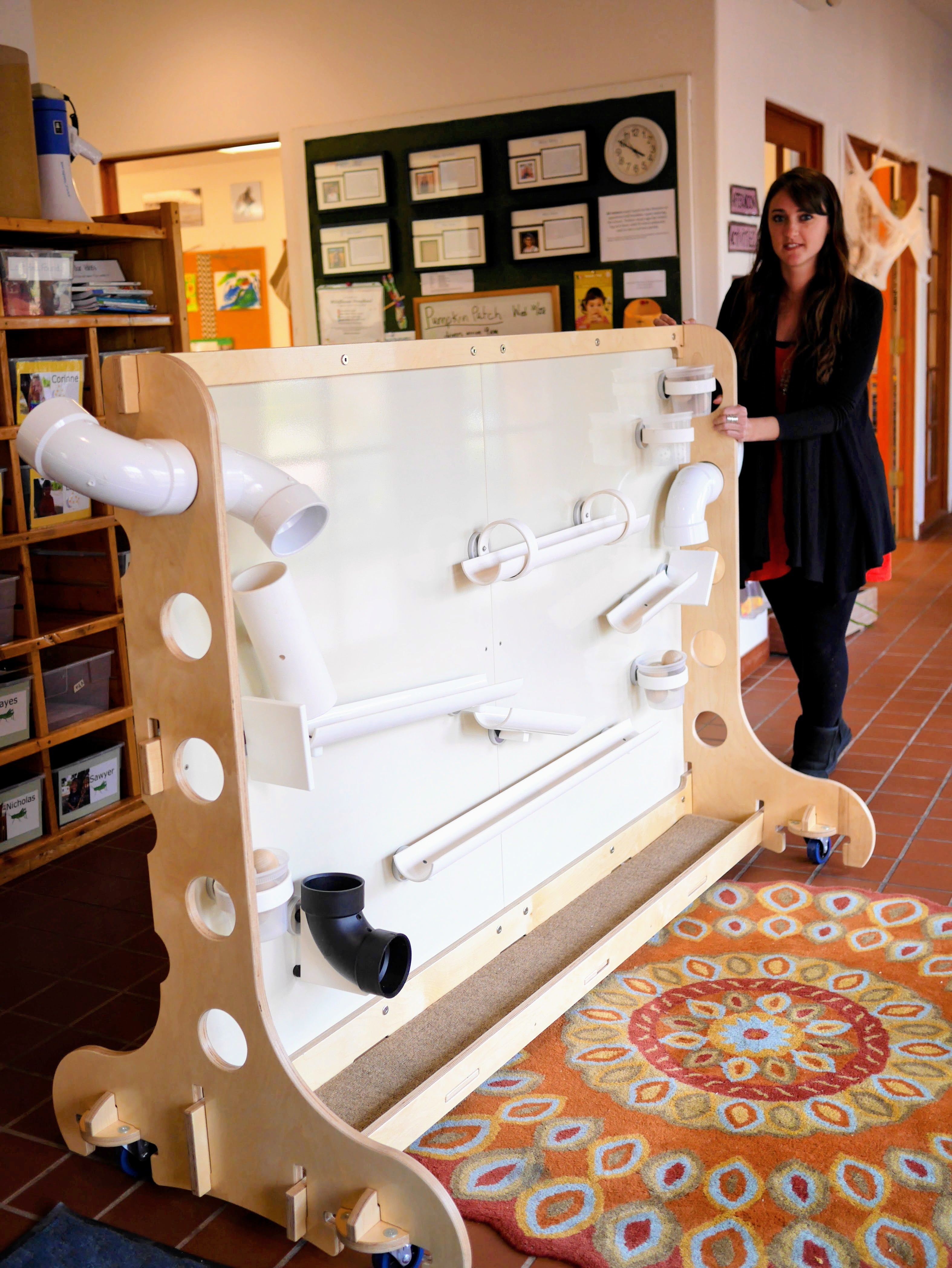
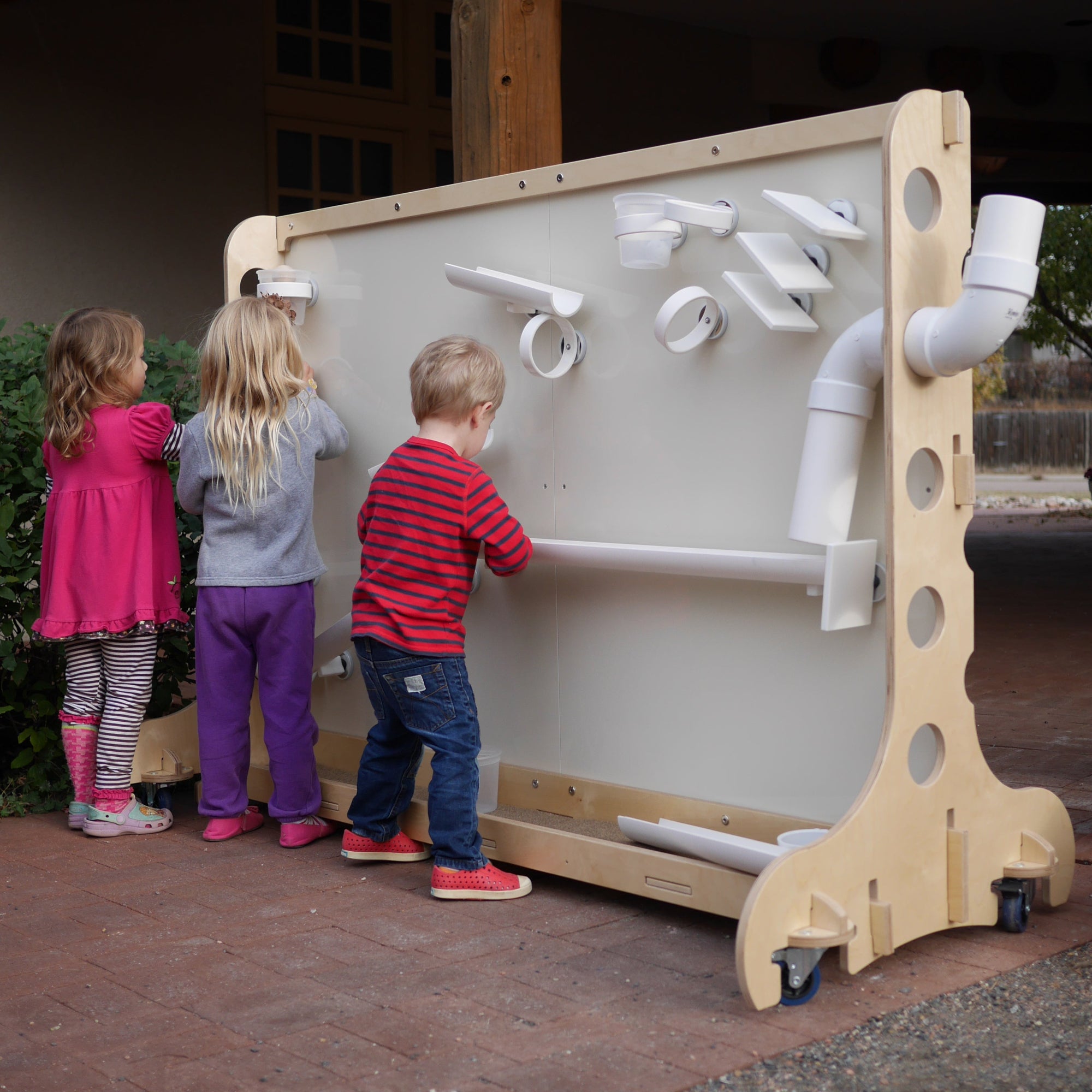
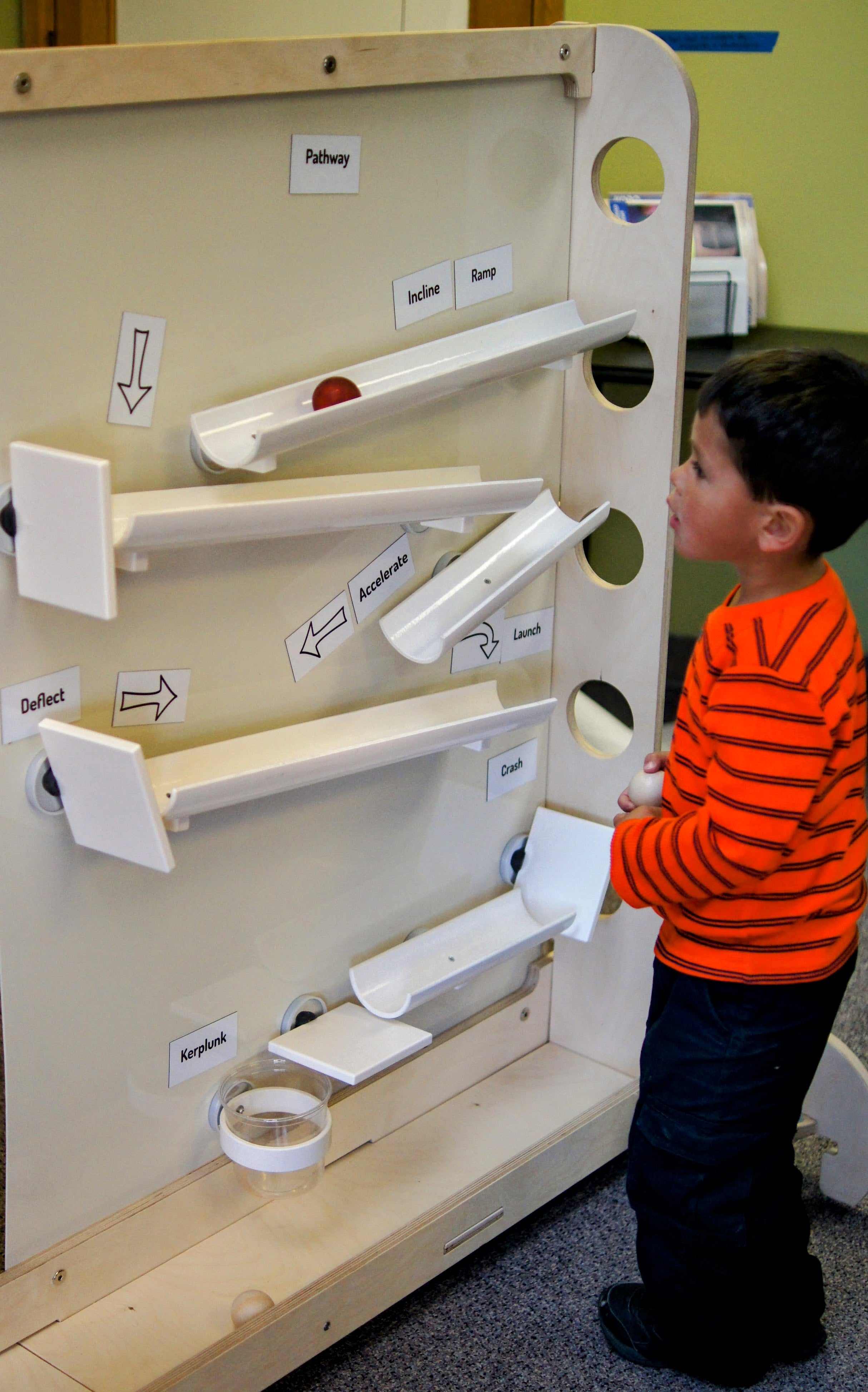
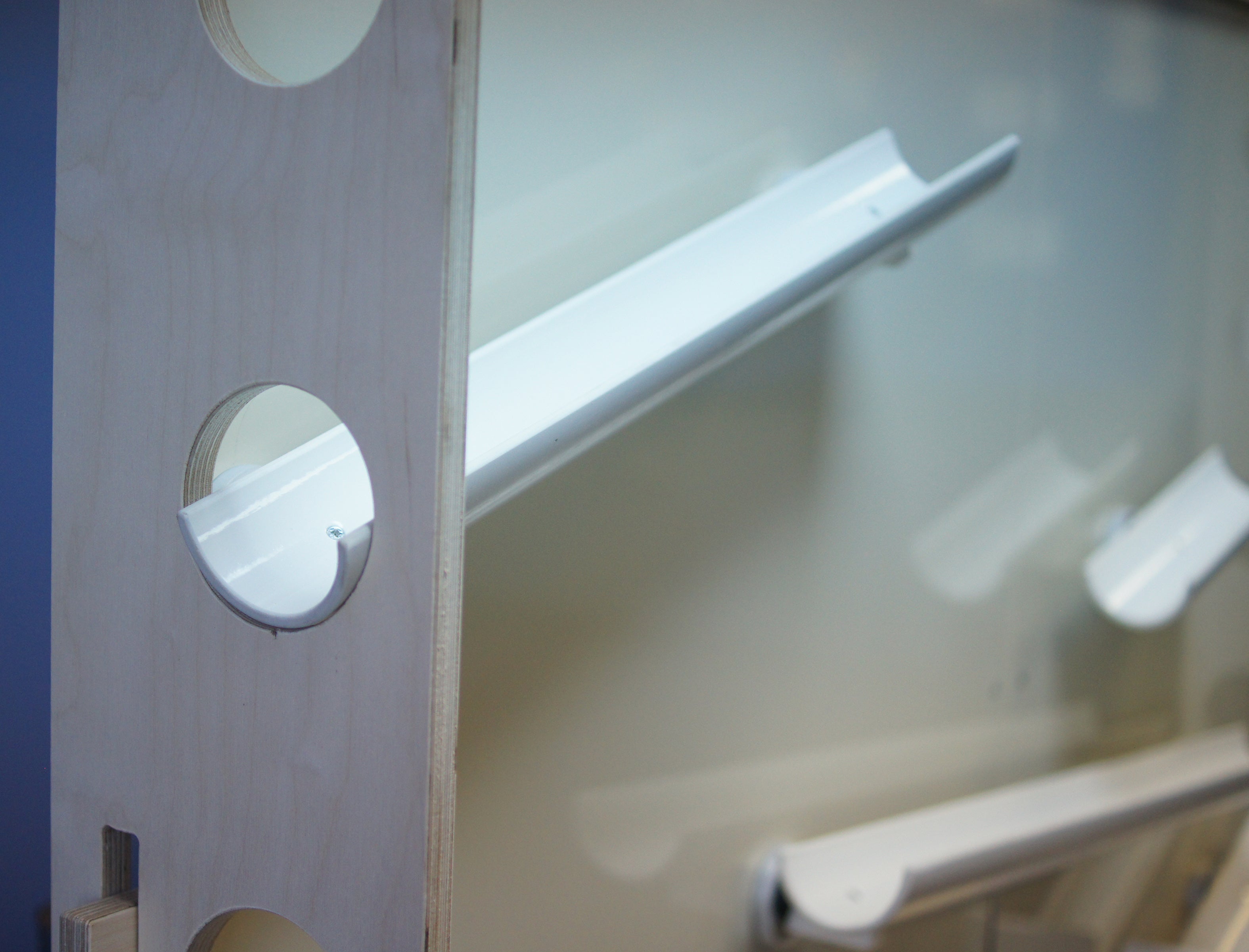
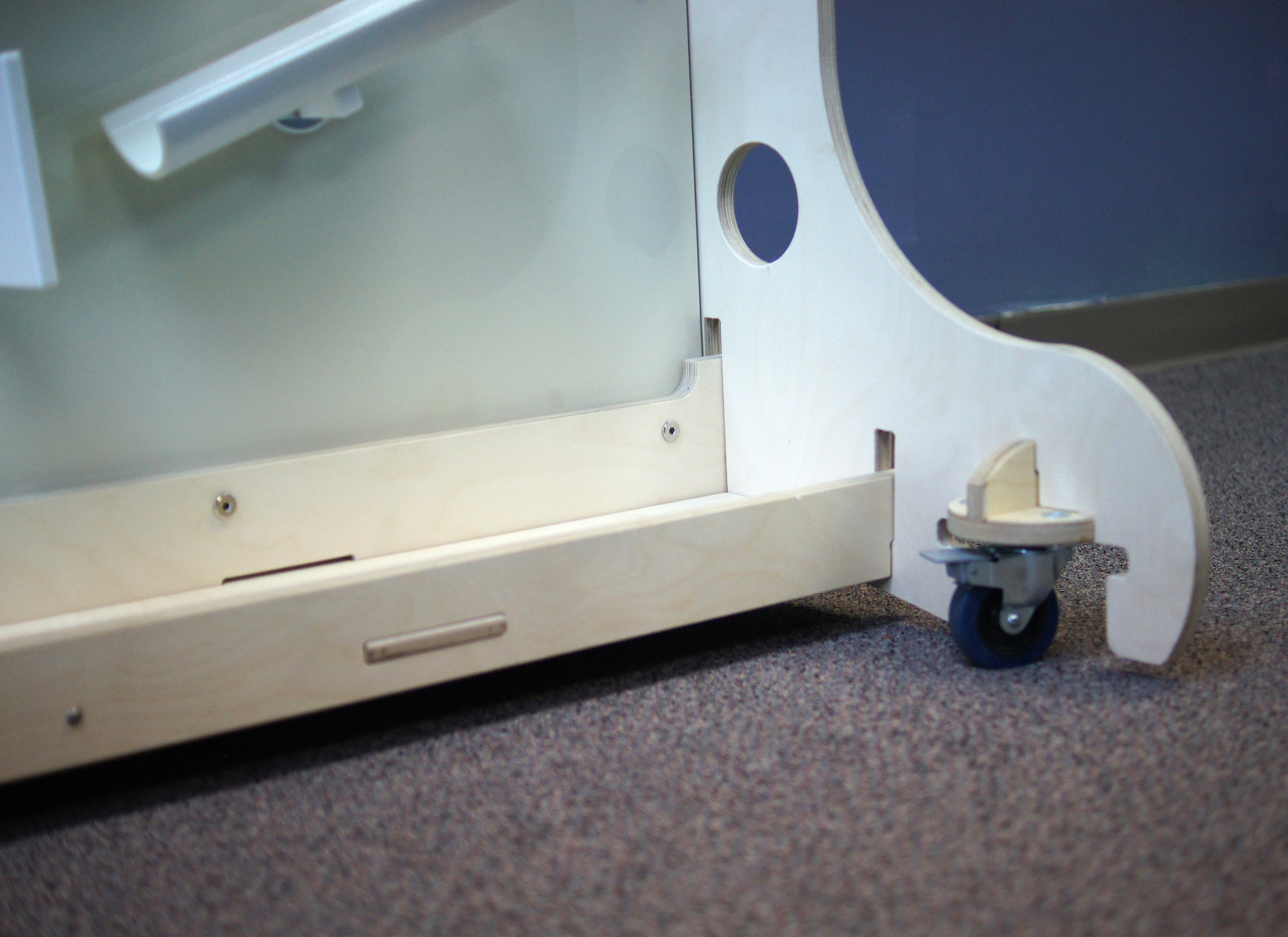
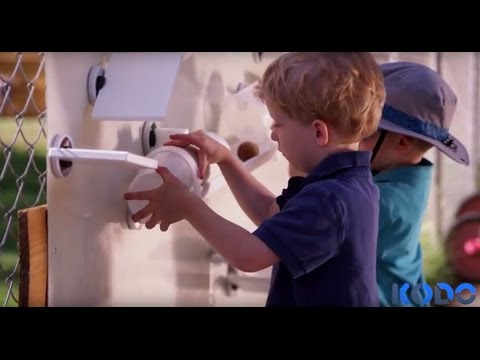
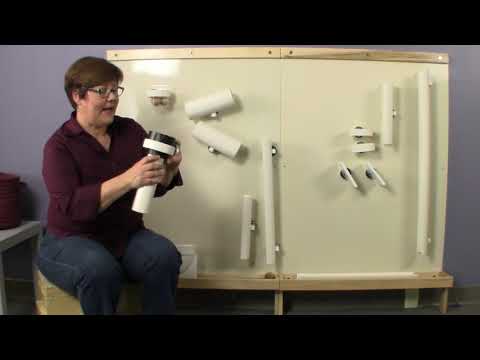
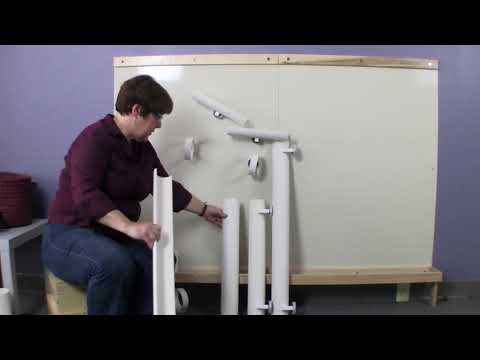
Mobile Magnet Wall
SKU: 100001
The Mobile Magnet wall can be used on both sides, making it a great value for your classroom and an efficient use of space!
Description
See the Magnet Wall in action -here
Meet the Indoor Mobile Magnet Wall, the ultimate tool for STEM play in your classroom or beyond. Every part on the wall is movable allowing students to arrange the magnetic ramps, rings, and other components to create engaging vertical drops and pathways. Newton’s Laws of Motion become real as little ones experiment and experience fundamental physics concepts. This engaging play motivates children to work together as a team to design, build, and overcome challenges by communicating in this highly social activity. It is amazing to see young children come together in harmonious play!
This innovative, portable wall features two 34″ x 44″ magnetic panels mounted on a sturdy Baltic Birch stand with easy-to-lock castors. This gives teachers the freedom to move the wall around wherever it’s needed—be it the classroom, hallway, library, or large motor space.
The Mobile Magnet Wall is designed to be versatile. Both sides of the wall can be used for play, with the back featuring a brace bar that can act as a divider between play areas or a guide for sequential activities. The back also supports accessories like Wooden Gears, Words and Symbols, and Maker Magnets, making the wall a perfect addition to a classroom for children aged 3 and up.
With its portability and dual-sided functionality, the Mobile Magnet Wall is a fantastic investment for any learning environment!
The Mobile Magnet Wall is made up of:
- A Baltic Birch Stand with locking castors
- Two 34″ wide x 44″ tall magnetic metal panels
- Two tubes and elbows (On either side of the Mobile Magnet Wall, for redirecting materials. Add 7″ width per side)
The Magnet Wall Fundamentals Pack is included!
- 4 magnetic ramps (one 3 ft, one 2 ft, and two 1 ft)
- 2 non-magnetic ramps (one 3 ft and one 2 ft)
- 30 weather treated balls (10 2″, 10 1.75″, 10 1.5″)
- 4 walls
- 6 rings
- 4 cups
The Mobile Magnet Wall is 72 inches long x 31 inches wide x 51 inches high. This product requires assembly.
This is the Indoor Version of our Mobile Magnet Wall. Looking for an outdoor version? We have one, just click here! The Indoor version can be wheeled outdoors as is shown in some of the photos, however it is made of Wood and should not be exposed to water or the elements.
Please note: Removal of the plastic covers from the magnets will not only scratch the Magnet Wall panels but it will also void your warranty! We cannot be responsible for modifications to our products in the field without direct supervision and testing. The Magnet Wall is proudly made in the USA.
Appropriate for ages 3+

This warning is for the included 1.5" and 1.75" balls. The included 2" balls are not chocking hazards. Please let us know if you would like all balls changed out to 2" balls.
Ideas & Concepts
Video
Complete it with these